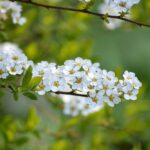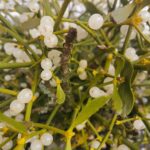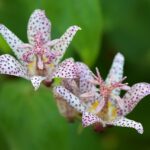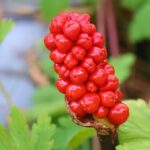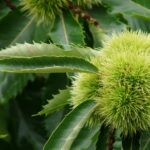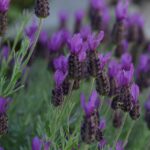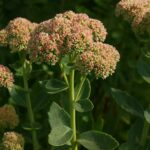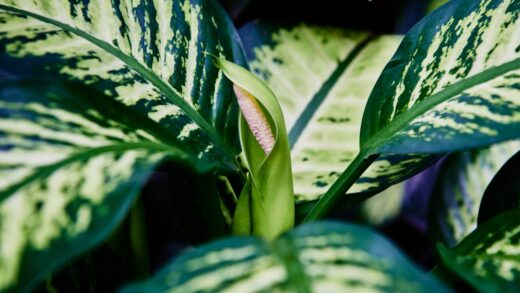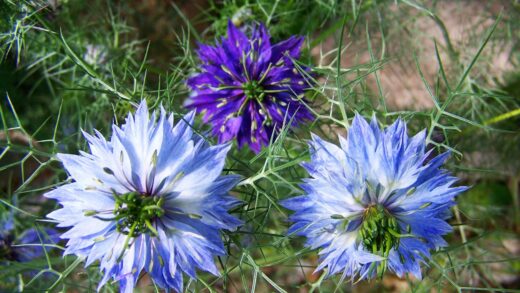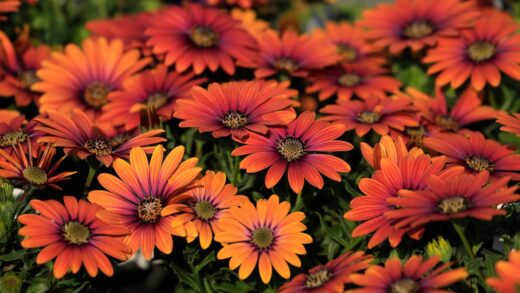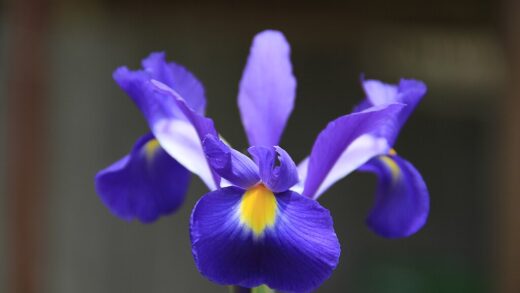The Hosta, also commonly known as the plantain lily, is one of the most beloved shade-tolerant perennial plants in gardens, primarily prized for its stunning foliage. Although its care is relatively straightforward, pruning and cutting back at the right time and in the right way are essential for maintaining the plant’s health, preventing diseases, and preserving the aesthetic order of the garden. The procedure is not complicated, but knowing a few basic rules helps ensure that Hostas display their best form year after year. By applying the correct technique, we can not only enhance the plant’s vitality but also make the defense against pests, such as slugs, more effective. This expert guide provides a detailed overview of the most important aspects of pruning and cutting back Hostas, assisting garden enthusiasts in professional plant care.
Pruning tasks can be fundamentally divided into two main categories: in-season maintenance pruning and a full cutback in autumn or spring. In-season interventions primarily serve aesthetic and plant protection purposes, while the full cutback aids in the plant’s winter preparation and renewal for the next season. Removing damaged, diseased, or slug-eaten leaves is an ongoing task during the growing season, which prevents the spread of pathogens and gives the plant a tidy appearance. It is important to always use clean, disinfected pruning shears or a knife for this operation to avoid transmitting infections to healthy plant parts. The leaf stalks should be cut back all the way to the base of the plant.
The removal of flower scapes is another important seasonal task, about which opinions among gardeners are divided. Most Hosta varieties are grown primarily for their foliage, not their flowers, which are often of a more modest appearance, consisting of lavender or white blooms. The development of flower scapes draws significant energy from the plant, which can be at the expense of leaf growth. Therefore, if the goal is to achieve the lushest and largest foliage possible, it is worth cutting the flower scapes as soon as they appear, as close to the base as possible. Others, however, enjoy the airy inflorescence of Hostas or leave them to bloom to feed pollinators like bees and bumblebees.
Perhaps the most debated issue in Hosta care is whether the entire foliage should be cut back in the autumn, after the first frosts, or in the spring, before the new shoots emerge. Both approaches have their advantages and disadvantages, which should be weighed based on the specifics of the garden and the gardener’s workload. The argument for autumn cutback is that the decaying, moist foliage provides an ideal hiding place and food for slugs and other pests, and it favors the overwintering of fungal diseases, such as Hosta leaf spot. A thorough autumn cleanup and removal of the foliage can significantly reduce the infection pressure for the following year, and the garden also presents a tidier appearance during the winter months.
Conversely, the spring removal of foliage also has its supporters, who present several important arguments for their position. The leaves left on the plant in autumn act as a natural mulch, protecting the plant’s crown—the central buds—from winter frosts and cold winds, which can be particularly beneficial for younger plants or those grown in harsher climates. Furthermore, the decomposing foliage contributes to enriching the soil’s nutrient content and provides shelter for beneficial insects during the winter. Those who opt for a spring cutback must remove the dried remains from the previous year in early spring, before the new, cigar-like shoots emerge, being careful not to damage the tender new growth.
More articles on this topic
The correct timing for pruning
Choosing the right time to prune is crucial for maximizing the health and aesthetic value of the Hosta. During the growing season, from spring to autumn, it may become necessary to remove damaged or diseased leaves at any time. As soon as yellowing, browning, mechanical damage, or signs of pest chewing appear on a leaf, it should be cut off immediately. This not only improves the plant’s appearance but also prevents the problem from spreading to other leaves. The cut should always be made at the base of the leaf stalk with a sharp and sterilized tool to ensure the cut surface is as small and clean as possible, promoting quick healing.
The timing of cutting flower scapes depends on the gardener’s individual preferences. If the goal is to maximize foliage growth, the flower scapes should be removed when they are still only a few centimeters long and can be easily broken off or cut from the base. However, if you wish to enjoy the flowers or provide food for pollinators, it is worth waiting until the end of the blooming period. For aesthetic reasons, the stalk containing the spent flowers should be cut off after the blooms have withered, so the plant does not expend unnecessary energy on seed production, unless seed propagation is the goal, which rarely results in true-to-type offspring for Hostas.
The great dilemma of whether to cut back the entire foliage in autumn or spring is also a matter of horticultural philosophy. The main advantage of an autumn cutback is preventive plant protection. After the first serious frosts have nipped the leaves and they begin to yellow and turn mushy, the foliage can be cut back to ground level. This action removes potential overwintering sites for slug eggs and fungal spores, allowing the plant to start its growth in a cleaner environment the following spring. A clean bed also facilitates weeding and mulching in the spring.
Spring cutback is favored by proponents of more nature-friendly gardening. The dead foliage forms a protective layer around the base of the plant during the winter months, which moderates soil temperature fluctuations and protects against hard frosts. This natural cover provides shelter for many beneficial creatures, such as ladybugs or spiders, which help to keep pest populations in check. If this method is chosen, the cutback should be done in early spring before the new shoots break through the soil surface. It is important to work carefully to avoid breaking or damaging the sensitive new shoots with the pruning shears.
More articles on this topic
Tools and techniques for pruning
Using the right tools is essential for clean and effective work, which minimizes stress on the plant and the risk of infection. For pruning Hostas, a good quality, sharp pair of pruning shears or strong garden scissors is usually sufficient. For thinner leaf stalks and flower scapes, a sharp knife may also be suitable. The most important aspect is the sharpness of the tools, as a dull cutting surface damages plant tissues, leading to slower healing and increased susceptibility to diseases. It is essential to disinfect the tools between cuts, and especially when moving from one plant to another.
The easiest way to disinfect is to wipe the cutting surfaces of the tools with an alcohol wipe or briefly dip them in a 10% bleach solution (one part household bleach to nine parts water), then rinse with clean water and dry. This step is particularly critical when removing seemingly diseased plant parts, as many viral and fungal diseases can be spread through pruning tools. Hosta Virus X (HVX), for example, is a highly contagious disease with no cure, and can only be prevented through strict tool hygiene. Careful disinfection is a cornerstone of professional plant care.
The pruning technique is relatively simple: the stalk of the leaf or flower to be removed should be cut as close as possible to the central part of the plant, the so-called crown, without damaging the crown itself. This ensures that no stubs are left behind, which could die back and become attractive to pathogens and pests. During a full autumn or spring cutback, all the plant’s leaves should be cut about 2-5 centimeters above ground level. This height is sufficient to protect the plant’s central buds while getting rid of unnecessary plant matter. The cut plant debris should always be collected.
Proper disposal of the cut plant parts is also part of the pruning process. If the leaves are healthy, they can be composted, returning valuable nutrients to the garden’s cycle. However, if the leaves show signs of disease, such as suspicious spots or discolorations, or if you are dealing with a serious slug problem in the garden, it is better to place the cut foliage in the municipal waste or burn it if permitted. This will prevent pathogens and slug eggs from overwintering in the compost and re-infecting your plants the following season. Prevention is always more effective and simpler than treating an already established problem.
Special considerations and problem-solving
Special situations that require particular attention may arise during Hosta pruning. One such situation is handling plants infected with Hosta Virus X (HVX). Symptoms of HVX include discoloration along the veins, ink-like spots, leaf distortion, and general stunting of the plant. Since this virus is incurable and highly contagious, the infected plant must be immediately removed from the garden, including its root system, and destroyed. Most importantly, the tools used for removal (shovel, pruning shears) must be thoroughly disinfected in multiple steps afterwards to avoid transferring the virus to other, healthy Hostas.
Managing damage caused by pests, especially slugs and snails, also falls within the scope of pruning. Chewed, hole-filled leaves are not only aesthetically displeasing but also open the door for secondary infections. Such leaves should be continuously removed during the growing season. A thorough autumn cutback is a particularly effective method for reducing the slug population, as it removes the moist, decaying leaf mass that serves for egg-laying and overwintering. In addition to pruning, other slug control methods, such as using slug baits or traps, should also be employed for more effective control.
Dividing Hostas, which is the most common method of propagating and rejuvenating the plant, is also closely related to pruning. Division is usually done in early spring when the new shoots appear, or in late summer. To facilitate the process, the plant’s foliage can be cut back by about half, which reduces transpiration and the stress on the plant during lifting and division. The cutback also provides a better view of the root zone, making it easier to properly separate the clump with a sharp knife or spade. The divided clumps can then be planted immediately.
Finally, different Hosta varieties may have different pruning needs, although the basic principles are generally the same. For giant varieties, such as ‘Sum and Substance’ or ‘Empress Wu’, stronger pruning shears or even a saw might be necessary to remove the thick leaf stalks and flower scapes. For miniature varieties, on the other hand, a smaller, precise pair of scissors is sufficient. It is important to remember that pruning, while beneficial, always causes some stress to the plant. Therefore, interventions should always be carried out at the right time, with sharp and clean tools, leaving the smallest possible wound surface to help the Hosta regenerate quickly and grow unimpeded.


